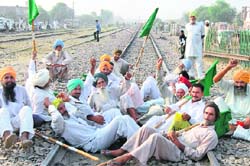
It’s been a long time coming but Sikhs all across the globe seem to be making more of an effort to celebrate Lohri today, not only for their sons but also for their daughters. In Tarn Taran, Punjab, this year’s Lohri’s celebrations were dedicated to the 101 baby girls who live in the area.
“The main purpose of this celebration is to make people aware of the social evil of female foeticide. The male and female ratio is getting unbalanced with each passing day. In order to balance the gap in the Sikh society, Akal Takht has given order not to support female infanticide. Female foeticide is as bad as slaughtering a holy cow,” said Parvinder Singh. Chairman, Kalpana Chawla Pragtisheel Society.
::
Also in the news today is the story of Lak[h]winder Singh, a Giani in Kelowna, Canada who was arrested and is being charged for sexual exploitation, sexual interference, two counts of sexual assault and one count of assault. The allegations that give rise to the sexual offences began in late 2007 and the victim is now 16 years old.
Lakwinder Singh, the 29-year-old preacher at a Rutland temple, Gurdwara Guru Amandas Darbar, was arrested after a family with ties to the temple brought forward allegations of sexual impropriety to police last week.
Tarsem Singh, a spokesman for the Gurdwara, said Lakwinder Singh was employed at their temple for nearly seven years, but has since been fired. In addition, the gurdwara is supporting the police’s efforts in finding any other possible victims.
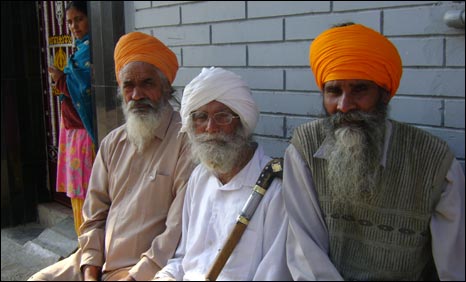 The World Bank estimates that nearly six millon Indians working abroad sent $30 billion home in 2008. Of those, it is estimated that Punjabi non-resident Indians sent between $150 million to $160 million. It should come of no surprise that Punjab is feeling the ramifications of the global economic downfall (Maple Leaf Sikh recently blogged about the impact on Canada’s Punjabi community). Many migrants have learned to live frugally within their host countries so that they can save as much as possible to be able to send the money back home to Punjab. In turn, Punjab relies heavily on income invested back into the region by it’s migrants. Take Pyara Singh for example. He has been living in Germany for the past 14 years while his parents, wife and two children live in Giljian, Jalandhar.
The World Bank estimates that nearly six millon Indians working abroad sent $30 billion home in 2008. Of those, it is estimated that Punjabi non-resident Indians sent between $150 million to $160 million. It should come of no surprise that Punjab is feeling the ramifications of the global economic downfall (Maple Leaf Sikh recently blogged about the impact on Canada’s Punjabi community). Many migrants have learned to live frugally within their host countries so that they can save as much as possible to be able to send the money back home to Punjab. In turn, Punjab relies heavily on income invested back into the region by it’s migrants. Take Pyara Singh for example. He has been living in Germany for the past 14 years while his parents, wife and two children live in Giljian, Jalandhar.
Pyara Singh is on his annual visit home from Hamburg, Germany, where he works as a cook in a pizzeria… In this village of 300 homes, almost every family has sent one or more of its members to foreign shores. And the remittances they have sent back over the years have helped the residents here live a life of affluence that many in India can only dream of. Many of the houses have been built in the last few years and most are large. Some have expensive SUVs parked in their front yards. The conversation here is peppered with references to children and grandchildren making a living in the US, Canada, UK, Germany, Italy, France and Belgium. [link]
It is becoming starkingly clear that the global economic downturn has made individuals and communities more conscious of living within their means. Like the rest of the world, Punjab will also be struggling to make ends meet under its own circumstances.
A lack of industry and the outbreak of Sikh militancy in the 1980s also contributed to the flight of people to unknown shores in search of better prospects. “During the militancy, shiploads of men from Punjab fled to other countries and settled down there after getting political asylum. In time, they took their families and then friends and acquaintances too,” says Major Singh, a journalist in Jalandhar. “Punjabis can do only two things – they either join the army or they migrate. They have a craze to go abroad. But they are very hard working and they adjust well wherever they are,” he says.
Over the weekend it was reported that two Indian fighter jets violated Pakistani airspace. Although the Indian state is claiming the trespass was inadvertent, it seems that such a move is meant to engage in a ‘psychological escalation’ and pressure Pakistan into taking bolder actions against various militant groups.
However from talking to relatives in India and keeping abreast of the situation through Indian and Pakistani newspapers, it seems that an Indian strike against Pakistan is becoming a foregone conclusion. Anytime India and Pakistan have come to blows, it is the Punjab that is on the frontline. Thus while all South Asians should be aware of the ongoing situation, Sikhs in particular should be paying stark attention. Stratfor has provided an interesting analysis of the situation, which I try to summarize some of the points here.
The last time I was in Punjab, I visited a gurdwara with a cousin of mine who was a one-time employee of the SGPC. 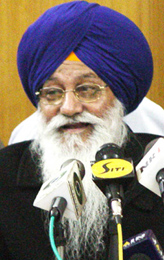 Upon receiving and tasting the karah parshad, I asked him why it was so coarse and dry compared what I was used to. He responded that it was now common practice for SGPC-controlled gurdwaras to use a lower quality, more unrefined type of flour, as this required less butter. But why would the gurdwara staff want to use less butter? To pocket the savings in the butter budget, of course.
Upon receiving and tasting the karah parshad, I asked him why it was so coarse and dry compared what I was used to. He responded that it was now common practice for SGPC-controlled gurdwaras to use a lower quality, more unrefined type of flour, as this required less butter. But why would the gurdwara staff want to use less butter? To pocket the savings in the butter budget, of course.
Sadly, not much surprises me about the SGPC anymore. A story out of the Tribune India this weekend reported the following account of 15 SGPC employees being fired.
The Shiromani Gurdwara Prabandhak Committee dismissed as many as 15 employees on the recommendation of the fact-finding committee, headed by general secretary Sukhdev Singh Bhaur.
Earlier, they were indicted for indulging in serious cases including corruption, addiction and moral turpitude. However, the SGPC has decided to review the cases of those who were found guilty of pilferage of ration from the Guru Ram Dass Langar and iron rods from store of Gurdwara Sultanpur Lodhi (Kapurthalla).
Among those who have been dismissed include Sukhvir Singh, a gurdwara inspector, SGPC, Sawinder Singh, posted at Gurdwara Jind, Ajit Singh (Gurdwara Bir Sahib), Devinder Singh (Darbar Sahib, Amritsar), Lakhwant Singh, Satnam Singh (Gurdwara Sukhchaina Sahib, Phagwara), Pargat Singh and Baldev Singh (Darbar Sahib), Balkar Singh (Gurdwara Tahliana, Raikot), Harjit Singh, Natha Singh and Dalbag Singh (Takht Kesgarh Sahib), Rachhpal Singh (Darbar Singh) and Tarsem Singh (Gurdwara Amb Sahib).
Talking to The Tribune, SGPC president Avtar Singh said the employees who were sacked were allegedly involved in theft/pilferage of ration, drug addiction and moral turpitude.
He said the SGPC was determined to weed out corruption and all sorts of evils from the committee.
The sub-committee, which recommended immediate dismissal of the employees, comprised Sukhdev Singh Bhaur, Gurbachan Singh Karmuwala, Bibi Bhajan Kaur Dograwala, both executive members, Baba Tek Singh, Makhan Singh Nangli, Kulowant Singh Mannan and Harbans Singh Kandhola. Earlier, the accused employees were placed under suspension, but they had applied for mercy appeal.
However, after scrutiny of the record, 22 employees were found to be guilty of various charges, while certain officials were let off for want of proof. It may be recalled that the SGPC had dismissed its two employees while two officials were suspended for bogus purchase of more than 10,000 cement bags by the SGPC by tampering with records.
Several farmers created a blockade on Punjab railroad tracks to demand better prices for rice and cotton. Read here for the full story.
This protest was done in the quintessential farmer-way … a picture always speaks a thousand words … beautiful! Hope you all have a relaxing weekend! 
 As I searched the Internet for information on the 2008 Diwali celebration at the Golden Temple, I came across this video on YouTube. It shows a beautifully lighted Golden Temple complex, with fireworks going off in the nighttime sky. My joy at watching the visuals soon turned to discomfort in hearing the sounds — the cracking of the fireworks reminded me of gunshots, gunshots that went off in that same area over twenty-four years ago.
As I searched the Internet for information on the 2008 Diwali celebration at the Golden Temple, I came across this video on YouTube. It shows a beautifully lighted Golden Temple complex, with fireworks going off in the nighttime sky. My joy at watching the visuals soon turned to discomfort in hearing the sounds — the cracking of the fireworks reminded me of gunshots, gunshots that went off in that same area over twenty-four years ago.
As I thought about the horror of Operation Blue Star and the subsequent anti-Sikh riots in Delhi, a friend relayed this disturbing and upsetting news: the Indian Army finally admitted last month that Sikh soldiers were among those killed in the anti-Sikh pogrom. Up until last month, the Indian Army reportedly hid the names of the soldiers who were killed in the riots. In fact, the government allegedly “hatched a conspiracy to hush up [the] matter by labeling the soldiers as deserters.”
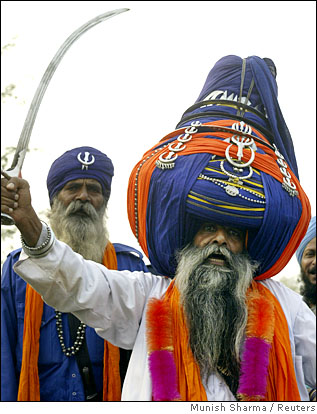
“Major Singh, a Nihang or a Sikh warrior, wears a head wrap that is about the length
of four football fields during a religious procession in Amritsar, India.”
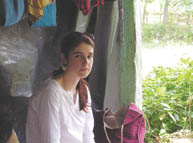 In an article published in the academic journal Ethnic and Racial Studies, last year, a PhD student in political science, Marie-Eve Reny makes a comparative study of political mobilization amongst the Sikhs of Punjab and the Uyghurs of Xinjiang in China.
In an article published in the academic journal Ethnic and Racial Studies, last year, a PhD student in political science, Marie-Eve Reny makes a comparative study of political mobilization amongst the Sikhs of Punjab and the Uyghurs of Xinjiang in China.
The Uyghurs are a Muslim community of Turkic descent in Western China. Many in the region have been fighting for their independence from China to establish Uyghurstan.
For her abstract, Marie-Eve Reny writes:
This article examines the reasons why the politicization of language has not been translated into disruptive forms of ethnic mobilization as opposed to the political salience of religion among the Uyghurs in Xinjiang throughout the 1990s and the Sikhs before and after the creation of Punjab in 1966. The article argues, from a structural-rationalist perspective, that language-based claims in Xinjiang and in Punjab have been accommodated by the respective central governments to a larger extent than religious claims have. Accommodation has taken the form of particular policies as well as greater incorporation of minority elites on the basis of language, which have in turn significantly reduced the possibilities of anti-regime sentiments and the incentives for disruptive forms of pressure on the basis of linguistic claims among the minority group. Religious claims have, however, not been accommodated in a similar way.
On Wednesday, August 27, the Delhi High Court sentenced 4 men (Lal Bahadur, Ram Lal, Virender and Surinder Pal Singh) to life in prison, eighteen years after a trial court acquitted them for lack of evidence. The men were charged with rioting, murder, and conspiracy, related to the deaths of Rajinder and Sardool Singh who were burnt alive on November 1, 1984 and their property looted in Sagarpur. The 4 men were also fined Rs. 21,000 each (about $481.43 per person). The High Court stated:
“it is a case where the members of one community were singled out and were murdered and their properties were burnt and looted. Such lawlessness deserved to be sternly dealt with”. [link]
Interestingly, the court found that conspiring to commit a crime was equal to committing the actual crime (I’m assuming that “members of unlawful assembly…in prosecution of the object…” is conspiracy; it’s unclear from the press release whether this is for conspiracy to riot/murder/combination):
“We may observe here that the liability of the members of unlawful assembly who knew that an offence was likely to be committed in prosecution of the object for which they had assembled is equal to those who commit it,” the Bench observed in a judgement on an appeal filed by the state challenging the trial court’s acquittal order. [link] (emphasis added)
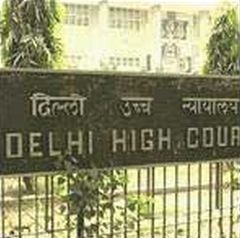 According to a couple of sources, the state appealed the case after the trial court found there wasn’t enough evidence in 1990. If this is true, and not just bad journalism (fabricated facts inserted into the press release), I wish I could congratulate the prosecutors who pursued and won this case.
According to a couple of sources, the state appealed the case after the trial court found there wasn’t enough evidence in 1990. If this is true, and not just bad journalism (fabricated facts inserted into the press release), I wish I could congratulate the prosecutors who pursued and won this case.
A sessions court had earlier on October 31, 1990, acquitted the accused due to lack of evidence. But the state had challenged the judgment in the Delhi high court stating that it have enough evidence to nail the accused persons. [link]
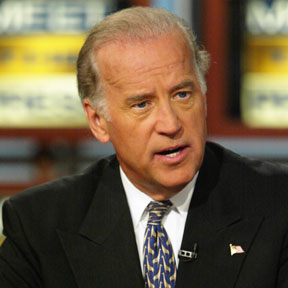 Once again, Indian-Americans have been unwillingly thrust into the heart of a contentious American political battle. For those of you who don’t remember, in 2006, incumbent Senator George Allen singled out and subsequently called an Indian-American, S.R. Sidarth, “macaca” while on the campaign trail. See video here. As The Washington Post’s national political reporter noted, Allen’s use of that slur was a “turning point” in his failed reelection bid, and became “an everlasting part of the political landscape.”
Once again, Indian-Americans have been unwillingly thrust into the heart of a contentious American political battle. For those of you who don’t remember, in 2006, incumbent Senator George Allen singled out and subsequently called an Indian-American, S.R. Sidarth, “macaca” while on the campaign trail. See video here. As The Washington Post’s national political reporter noted, Allen’s use of that slur was a “turning point” in his failed reelection bid, and became “an everlasting part of the political landscape.”
Just a few days ago, presumptive Democratic nominee Barack Obama selected fellow Senator Joe Biden to serve as his running mate. In 2006, Senator Biden said, “In Delaware, the largest growth of population is Indian-Americans, moving from India. You cannot go to a 7-Eleven or a Dunkin’ Donuts unless you have a slight Indian accent.” See video here.
Senator Obama’s decision has generated renewed interest in the 7-Eleven gaffe. See, e.g., here and here. The question is, should we care? In this post, I argue “yes.”
Harwant Kaur is from Punjab and will be competing in the discus throw. It seems that she has recently moved to Australia after a career in the Punjab Police with only dismal prospects. She had previously finished 13th at the Athens Olympics in 2004.
The women’s discus qualifying round is set to begin on Day 7 (Friday, August 15, 2008)
Mandeep Kaur seems to be from Punjab. She is competing in the Women’s 400m race as well as in the women’s 4×400m relay. I could not find a picture or any other information.
The 400m race qualifying rounds begin on Day 8 (Saturday, August 16, 2008) and the 4x400m relay will begin on Day 14 (Friday, August 22, 2008)
 Abhinav Bindra was considered a child prodigy, but has had limited success on the largest competitive stages. Still he is considered a medal hopeful.
Abhinav Bindra was considered a child prodigy, but has had limited success on the largest competitive stages. Still he is considered a medal hopeful.
Bindra will be competing in the 10m air rifle competition. Qualifications and the finale will all be on Day 3 (Monday, August 11, 2008) in the afternoon
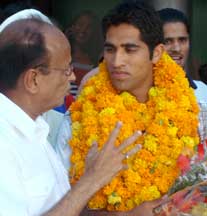 Rowing
Rowing
Manjeet Singh, a Chandigarh rower, has had much success at the junior levels. He will be competing in at the world stage in Beijing in the lightweight double sculls event. While Manjeet Singh and his partner Devinder Kumar are not considered medal contenders, they are hoping for a top-10 finish.
Rowing is set to begin on Day 1 (Saturday, August 9, 2008) at 17:00-17:10.
All the headlines are centered on the news of the capture of Bosnian Serb wartime president, Radovan Karadzic. Karadzic has been indicted for genocide in the Bosnia war. Apprehended by government officials, a change in political winds in Serbia now-seeking EU membership has allowed for the present Serbian government to capture the thirteen-year fugitive. The world is now waiting for Karadzic to be transferred to The Hague to  face trial.
face trial.
Karadzic’s soon-expected extradition and last week’s International Criminal Court (ICC) prosecutor request that genocide charges should be brought against Sudanese President Omar al-Bashir for state-sponsored pogroms in the Darfur region of Sudan is being watched the world over.
Karadzic’s arrest led to one Munira Subasic, head of a Srebrenica widow’s association (for more information on the Srebrenica Genocide/Massacre, click here), stated
“[Karadzic’s arrest] is confirmation that every criminal will eventually face justice.” [link]
I hope Subasic’s comments ring true. While I celebrate the capture of one tyrant, as a Sikh, my attention wanders (as it tends to) to the situation in Punjab and the Indian State.
Earlier in the month, an East Panjabi newspaper editor, Baljit Brar, posed the possibility that Pakistan stood to earn up to $500 million per year by promoting Sikh tourism.
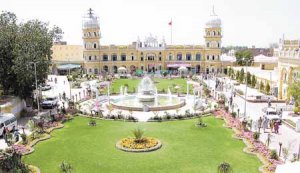 Brar suggests that since the airport in Lahore is more convenient and is better maintained than that in Amritsar, with better border mobility the Lahore airport could be the airport of choice for diasporic Sikhs. Many Sikhs have bought into the ‘Romance that is Panjabiyat,’ including at-times the present langa(w)r-iter. While Brar’s numbers may be grossly optimistic, I do believe that many Sikhs would love to take advantage of new tourism and travel opportunities.
Brar suggests that since the airport in Lahore is more convenient and is better maintained than that in Amritsar, with better border mobility the Lahore airport could be the airport of choice for diasporic Sikhs. Many Sikhs have bought into the ‘Romance that is Panjabiyat,’ including at-times the present langa(w)r-iter. While Brar’s numbers may be grossly optimistic, I do believe that many Sikhs would love to take advantage of new tourism and travel opportunities.
Many Sikhs left West Panjabi villages and cities in their stead in 1947. Another langa(w)r-iter had commented on the traumas of Partition. The opportunity to revisit one ancestral home may be part of the process in healing old wounds.
Brar makes a number of suggestions. In a world where economics flows across borders, new opportunities may avail themselves to the Sikhs to increase the prosperity of Panjab. One hopes governments can help create an environment where greater flows are possible. I definitely have longed to visit West Panjab. What about you? Is something like this feasible?
Is it just me or are we seeing Giddha increasing in popularity these days?
Giddha was the folk dance of choice for our Grandmothers and Mothers. It allowed them a platform to get together with other women, and through boliyan talk openly about their daily lives. I asked my Mum if this was a form of therapy for them, and she said “yes”. It was a release for these women to be able to have this time for themselves and openly release supressed feelings in a joyful manner.
We see a great number of young women in Universities joining the “Bhangra” team and peforming these rather masculine dances at Bhangra competitions. Where is our traditional Giddha? I found this video which shows a performance by the UC Davis Giddha Squad at a competition this year. It was nice to see that these girls decided to create some uniqueness to the monotony these Bhangra competitions have began to display. Hopefully this will be a continuing trend and we will see more incorporations of Giddha for women at University levels. There is a sense of elegance and femininity that Giddha has, and which Bhangra lacks for women.
I look forward to the day when young girls are able to immerse themselves in Giddha and learn Boliyan and truly appreciate what our culture has to offer. Maybe we will see a Giddha Academy some day? I am hopeful.
With Teeyan season upon us, we can take the first step in going and attending these events in our areas. In the California we have these events scheduled annually and it’s become larger every year. Please make sure to attend if you know of Teeyan happening in your area. It would be a great way to take your Grandmothers, Mothers, Aunts, Sisters, Daughters, and Friends out to spend an afternoon together. (And it’s a great workout!)
How do you all feel about this subject? How can we begin to make a progressive change towards incorporating Giddha into the lives of younger women?
Revolutions come in strange shapes. Sometimes ‘French,’ sometimes ‘Islamic,’ other times ‘American,’ and maybe even ‘Russian.’ Closer to us, they may even be ‘Sikh.’ However, they may even be in the form of a carbohydrate.
During the 16th century, an expansionist Spain accidentally found itself in the ‘New(?) World.’ Armed with firearms, but mainly syphilis, the Conquistadors devastated a continent and saw the near annihilation of the native people. Along with the silver wealth brought back to Europe came the potato.
While the history of the potato is a famous story in its own right, the potentiality of the potato is becoming more impressive for a number of different policy makers. Recently the world stage is beginning to forecast a “food crisis” in the making. Those of us that keep an eye on Punjab and the rest of the world should begin paying more attention to the growing ‘food crisis.’ With an expanding world population and increasing consumption, some experts are predicting increasing global insecurity. An agrarian-sensitive Punjab would feel the repercussions of such insecurity manifold.
Adding onto prior posts concerned about the environment, it’s interesting that the Transport Minister of Punjab made a statement today by riding his bike to work.
In a rare display of a public official and a cabinet minister and that too the transport minister of a state at its austere best, Master Mohan Lal, Transport Minister of Punjab on Thursday chose a rather conventional mode of transportation to reach his office at Civil Secretariat, here… Master rode a bicycle from his official residence in Sector 39 to attend his office. [link]
His one day bicycle ride was in response to increasing oil prices. Like Earth Hour, statements such as these are beneficial, but ultimately ineffective unless backed up by real, sustained efforts to change peoples’ actions on a daily basis. So – great statement Mohan Lal ji, but is it just a show?
In certain cultures, memorization has always been a means of oral transference of knowledge through the generations. My father can quote so much random poetry. I see others that can quote entire passages from Waris Shah’s Heer. Although some of us still take the time to memorize Sikh prayers and gurbani, I wonder how much oral knowledge is about to be lost in our generation?
Here is a look at one government school in Punjab. Interesting how nursery rhymes there are sung in a manner different than elementary schools here. Does anyone else notice the subtle differences in promoting a ‘rote’ model? Well, even if you don’t and I am just seeing something that isn’t there, enjoy the video and enjoy your weekend!

Through various posts on this blog, we have discussed the idea of activism (and even lacktivism) within the Sikh community. Recently I have been thinking about what activism meant to our parents’ and grandparents’ generation and in what form they expressed their personal and political thoughts. Twenty four years later, as we remember the events of 1984, we are reminded of how much these events raised Sikh consciousness. It is also a historic event in another sense. The response to the events of 1984 allowed for our parents and grandparents to stand in solidarity with other Sikhs and in doing so, mark their place in Sikh history on both a personal and political sense.
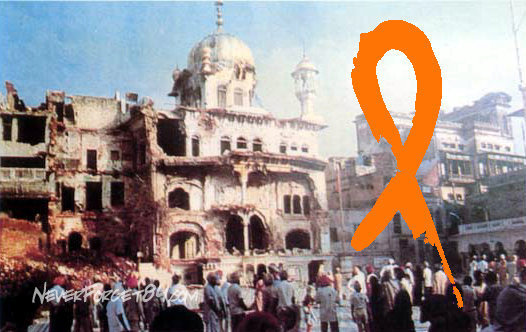 During those days and weeks following the invasion of the Darbar Sahib, hundreds and thousands of Sikhs took part in protests. I remember hearing about these stories from my Dad who ardently took part in these protests in London and Liverpool. However, what was more striking to me, was the role my Mum Mom played in these protests. I remember visiting a museum whilst on a school trip (a few years after 1984) and seeing pictures of the protests on display. I was caught off-guard as I saw a picture of my mother with her fist in the air protesting alongside other Sikh men and women. That image has stayed with me – essentially the activism that has always existed and remains to exist within our community. I wasn’t able to find much press about these protests, but did come across this clip.
During those days and weeks following the invasion of the Darbar Sahib, hundreds and thousands of Sikhs took part in protests. I remember hearing about these stories from my Dad who ardently took part in these protests in London and Liverpool. However, what was more striking to me, was the role my Mum Mom played in these protests. I remember visiting a museum whilst on a school trip (a few years after 1984) and seeing pictures of the protests on display. I was caught off-guard as I saw a picture of my mother with her fist in the air protesting alongside other Sikh men and women. That image has stayed with me – essentially the activism that has always existed and remains to exist within our community. I wasn’t able to find much press about these protests, but did come across this clip.
Please share your thoughts/memories.
